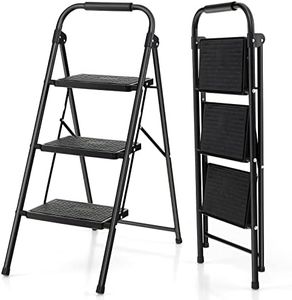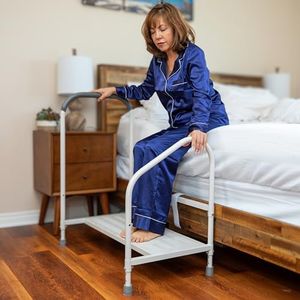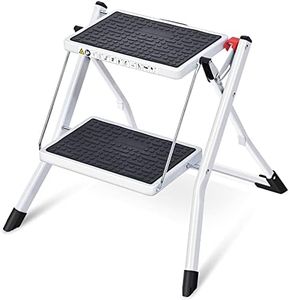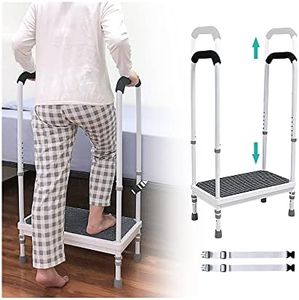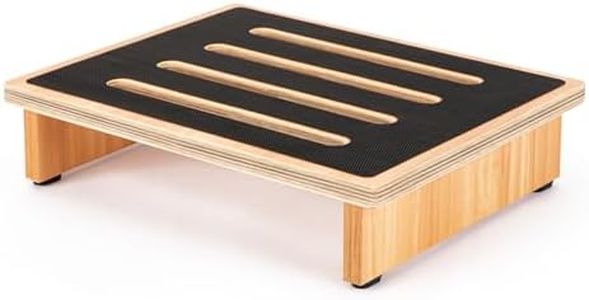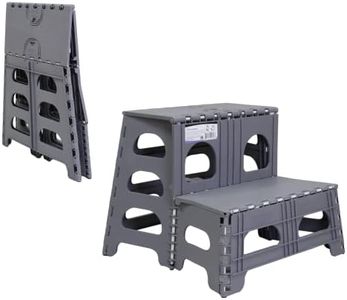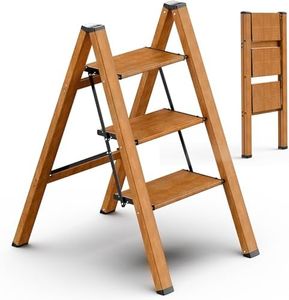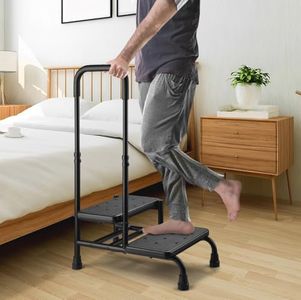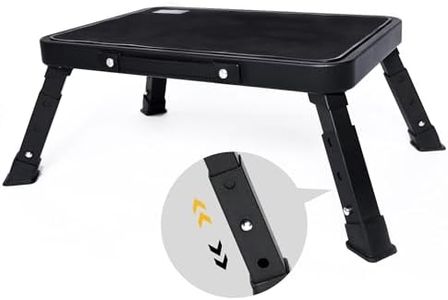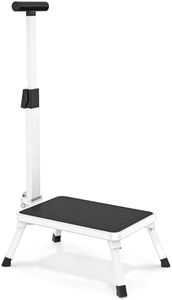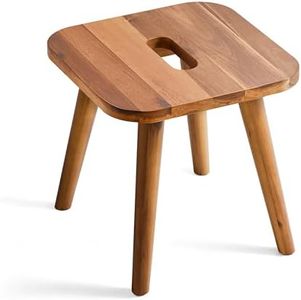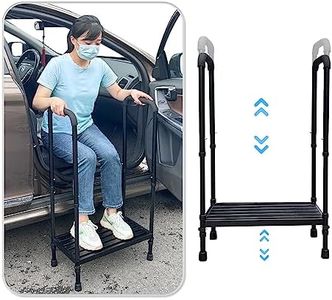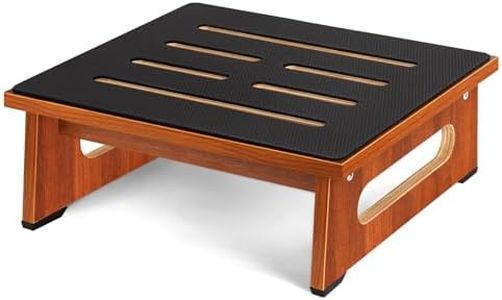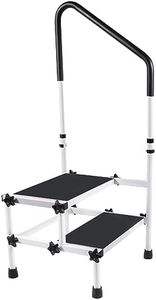We Use CookiesWe use cookies to enhance the security, performance,
functionality and for analytical and promotional activities. By continuing to browse this site you
are agreeing to our privacy policy
10 Best Senior Step Stool
From leading brands and best sellers available on the web.Buying Guide for the Best Senior Step Stool
Choosing the right step stool for seniors is an important safety decision. The right product can help with reaching high shelves, getting into a bed, or stepping safely in any room. For seniors, it's crucial to prioritize stability, safety features, and ease of use. By understanding the key factors, you can match the features of a step stool to the specific needs and daily routines of the senior who will use it.Weight CapacityWeight capacity refers to how much weight the step stool is designed to safely support. This is important to ensure the stool will not break or become unstable when in use. Most stools will have a label with a safe weight limit. They usually fall into ranges such as light duty (up to 200 lbs), medium duty (up to 300 lbs), or heavy duty (over 300 lbs). Choose a stool with a weight limit that comfortably exceeds the user's body weight to ensure both safety and longevity.
Height of the StepThe height of the step is the distance from the floor to the top of the standing surface. This matters because if the step is too high, it might be difficult or unsafe for a senior to climb. Step stools typically have steps ranging from about 4 inches (for very low stools) to 12 inches or more (for higher stools or multi-step versions). For most seniors, a lower step height makes it easier and safer to use; select a step height that matches the reach required without excessive effort.
Non-Slip FeaturesNon-slip features include textured surfaces for standing and rubberized feet or grips. These features prevent the stool from sliding and help seniors feel more secure on their feet. Some models provide rubber mats or grooves on the step, and wide, rubber-tipped feet for extra grip. Look for prominent non-slip features if the stool will be used on tile, hardwood, or any potentially slippery surface—it’s especially important for anyone with balance concerns.
Handrails or HandlesHandrails or handles are extra supports attached to the step stool, giving users something stable to hold onto while climbing up or down. For seniors with balance or mobility issues, these are extremely helpful. Some stools have a single handle, while others have railings on both sides. If the primary user has any difficulty with balance, or simply feels more comfortable with something to hold, opt for a stool with sturdy handrails.
Stability and Base SizeThe stability of a step stool is often determined by the size of its base and the way it distributes weight. A wider base generally means better stability. Step stools come in various shapes—some are narrow and light, while others have a broad footprint with anti-slip feet. For seniors, prioritize a solid, stable construction and avoid stools that feel wobbly or tip easily; a broader base is safer for most uses.
Portability and WeightPortability refers to how easy it is to move the stool from place to place, which depends on its overall weight and whether it has features like carry handles. Lightweight stools are easier to pick up but may be less stable; heavier stools are more stable but harder to move. For everyday use around the home, aim for a balance—choose a stool that is light enough to move but still feels substantial on the floor.
Step Size (Surface Area)Step size is the area available for standing. A larger standing surface allows for more comfortable and secure footing, which is especially important for seniors. Some stools have wide and deep steps, while others are more compact. If stability and comfort are priorities, look for a stool with a larger surface area for each step.
